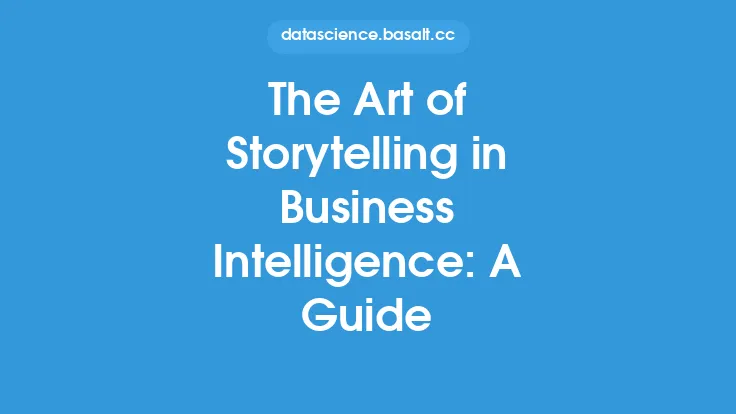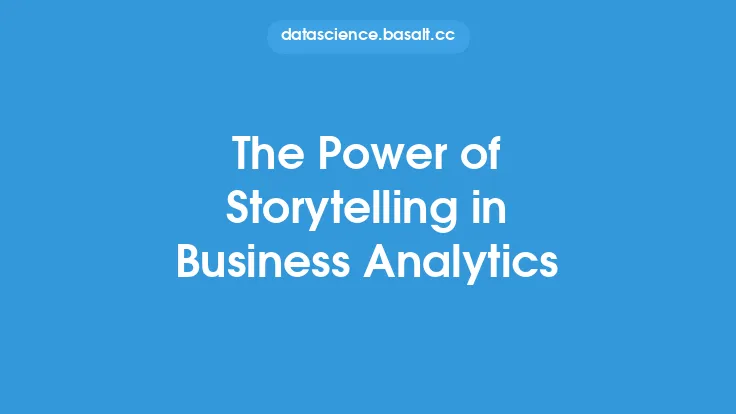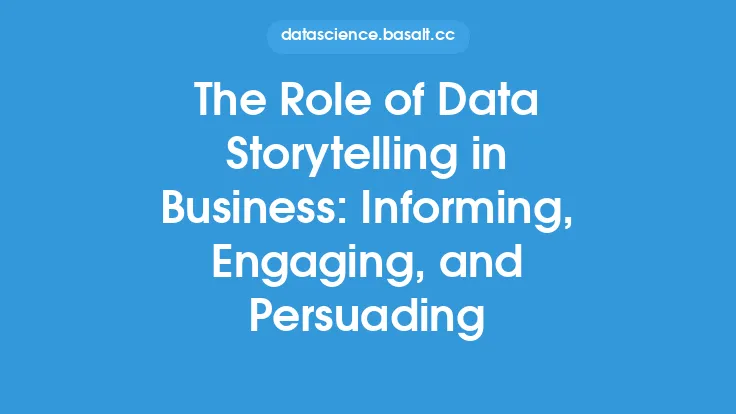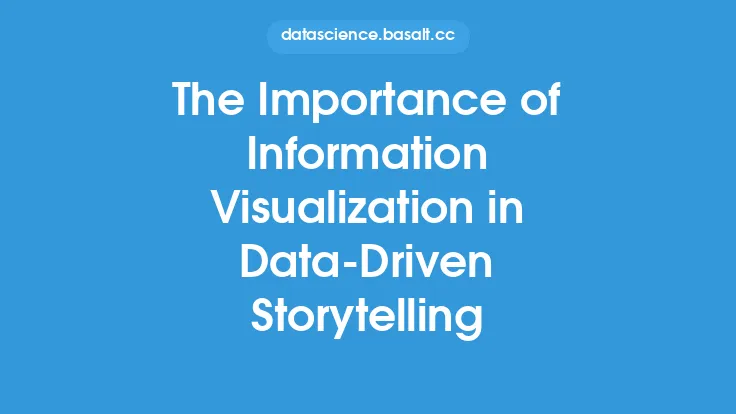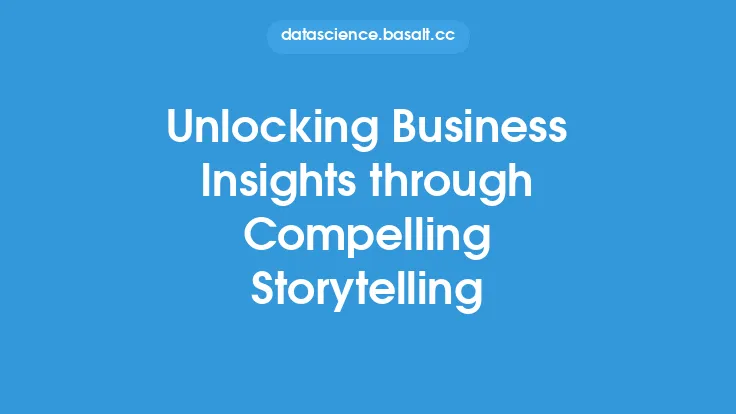In the realm of business, data is king. Companies collect vast amounts of information on their customers, operations, and finances, but this data is only useful if it can be translated into actionable insights. This is where business intelligence comes in – the process of analyzing data to inform business decisions. However, the sheer volume of data can be overwhelming, and it's easy to get lost in a sea of numbers and statistics. This is where storytelling comes in, a powerful tool that can help to make sense of complex data and communicate insights in a way that resonates with stakeholders.
Introduction to Storytelling in Business Intelligence
Storytelling has been a cornerstone of human communication for centuries, and its application in business intelligence is a natural extension of this concept. By using narrative techniques to present data, businesses can create a compelling and memorable story that captures the essence of their findings. This approach not only helps to engage audiences but also facilitates the communication of complex ideas and insights. In the context of business intelligence, storytelling involves using data to tell a story that is both informative and persuasive, with the goal of driving business decisions and actions.
The Benefits of Storytelling in Business Intelligence
The benefits of storytelling in business intelligence are numerous. Firstly, it helps to simplify complex data, making it easier for non-technical stakeholders to understand. By presenting data in a narrative format, businesses can avoid overwhelming their audience with technical jargon and statistics, and instead, focus on the key insights and findings. Secondly, storytelling helps to create an emotional connection with the audience, making the data more relatable and memorable. This is particularly important in business, where decisions are often made based on a combination of rational and emotional factors. Finally, storytelling enables businesses to communicate their findings in a more engaging and persuasive way, which can be critical in driving business decisions and actions.
The Components of a Business Intelligence Story
A business intelligence story typically consists of several key components, including a clear and concise narrative, relevant data visualizations, and a well-defined structure. The narrative should provide context and background information on the problem or opportunity being addressed, as well as a clear explanation of the insights and findings. Data visualizations, such as charts, graphs, and tables, should be used to support the narrative and illustrate key points. The structure of the story should be logical and easy to follow, with a clear beginning, middle, and end. Finally, the story should be supported by relevant data and analysis, to ensure that the insights and findings are credible and trustworthy.
The Role of Data Visualization in Business Intelligence Storytelling
Data visualization plays a critical role in business intelligence storytelling, as it helps to communicate complex data insights in a clear and concise way. By using visualizations such as charts, graphs, and tables, businesses can illustrate key trends and patterns in the data, and provide a more engaging and interactive way of presenting information. There are many different types of data visualizations that can be used in business intelligence storytelling, including bar charts, line graphs, scatter plots, and heat maps. The choice of visualization will depend on the nature of the data and the story being told, as well as the audience and the desired outcome.
Best Practices for Business Intelligence Storytelling
There are several best practices that businesses can follow to ensure that their business intelligence stories are effective and engaging. Firstly, it's essential to know the audience and tailor the story accordingly. This includes understanding their level of technical expertise, as well as their interests and motivations. Secondly, the story should be focused on the key insights and findings, rather than trying to present every detail and statistic. Thirdly, the narrative should be clear and concise, with a well-defined structure and a logical flow. Finally, the story should be supported by relevant data and analysis, to ensure that the insights and findings are credible and trustworthy.
The Technical Aspects of Business Intelligence Storytelling
From a technical perspective, business intelligence storytelling involves the use of a range of tools and technologies, including data visualization software, business intelligence platforms, and data analytics tools. These tools enable businesses to collect, analyze, and visualize data, as well as create interactive and dynamic stories that can be shared with stakeholders. Some popular tools for business intelligence storytelling include Tableau, Power BI, and QlikView, which provide a range of data visualization and analytics capabilities. Additionally, businesses may use programming languages such as R and Python to analyze and manipulate data, and create custom visualizations and stories.
The Future of Business Intelligence Storytelling
The future of business intelligence storytelling is exciting and rapidly evolving. As data becomes increasingly ubiquitous and accessible, businesses will need to find new and innovative ways to communicate insights and findings to stakeholders. This may involve the use of emerging technologies such as artificial intelligence, machine learning, and natural language processing, which can help to automate the process of data analysis and storytelling. Additionally, the rise of cloud-based business intelligence platforms and data visualization tools will make it easier for businesses to create and share interactive and dynamic stories, and collaborate with stakeholders in real-time.
Conclusion
In conclusion, business intelligence storytelling is a powerful tool that can help businesses to make sense of complex data and communicate insights in a way that resonates with stakeholders. By using narrative techniques to present data, businesses can create a compelling and memorable story that captures the essence of their findings, and drives business decisions and actions. As the field of business intelligence continues to evolve, it's likely that storytelling will play an increasingly important role, enabling businesses to communicate insights and findings in a more engaging, persuasive, and effective way.
